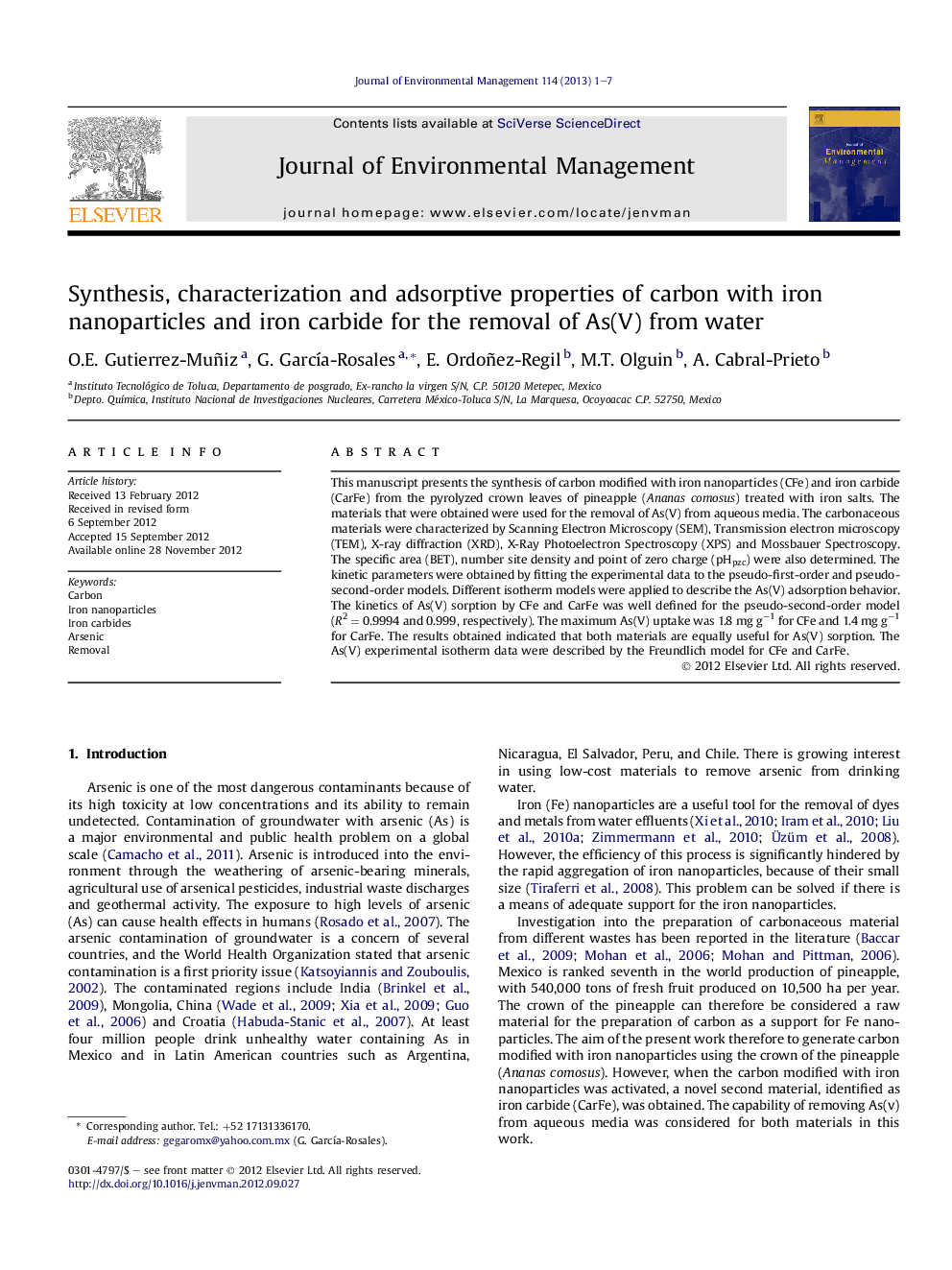| Article ID | Journal | Published Year | Pages | File Type |
|---|---|---|---|---|
| 1056575 | Journal of Environmental Management | 2013 | 7 Pages |
This manuscript presents the synthesis of carbon modified with iron nanoparticles (CFe) and iron carbide (CarFe) from the pyrolyzed crown leaves of pineapple (Ananas comosus) treated with iron salts. The materials that were obtained were used for the removal of As(V) from aqueous media. The carbonaceous materials were characterized by Scanning Electron Microscopy (SEM), Transmission electron microscopy (TEM), X-ray diffraction (XRD), X-Ray Photoelectron Spectroscopy (XPS) and Mossbauer Spectroscopy. The specific area (BET), number site density and point of zero charge (pHpzc) were also determined. The kinetic parameters were obtained by fitting the experimental data to the pseudo-first-order and pseudo-second-order models. Different isotherm models were applied to describe the As(V) adsorption behavior. The kinetics of As(V) sorption by CFe and CarFe was well defined for the pseudo-second-order model (R2 = 0.9994 and 0.999, respectively). The maximum As(V) uptake was 1.8 mg g−1 for CFe and 1.4 mg g−1 for CarFe. The results obtained indicated that both materials are equally useful for As(V) sorption. The As(V) experimental isotherm data were described by the Freundlich model for CFe and CarFe.
Graphical abstractFigure optionsDownload full-size imageDownload as PowerPoint slideHighlights► Uniformity of iron nanoparticles on carbon from pineapple crowns was obtained. ► The physical activation of carbon with iron nanoparticles generated iron carbide. ► Specific areas and active sites of carbon materials not affect the As adsorption. ► The characteristics of carbon materials influence on the As adsorption kinetic. ► The Freundlich model describes the isotherm of As by both carbon materials.
